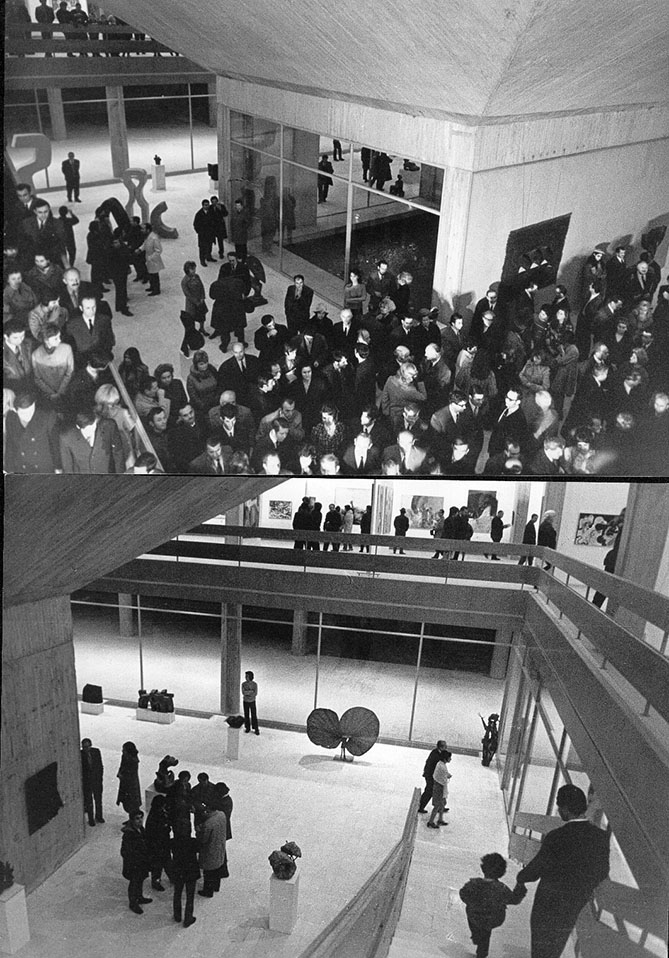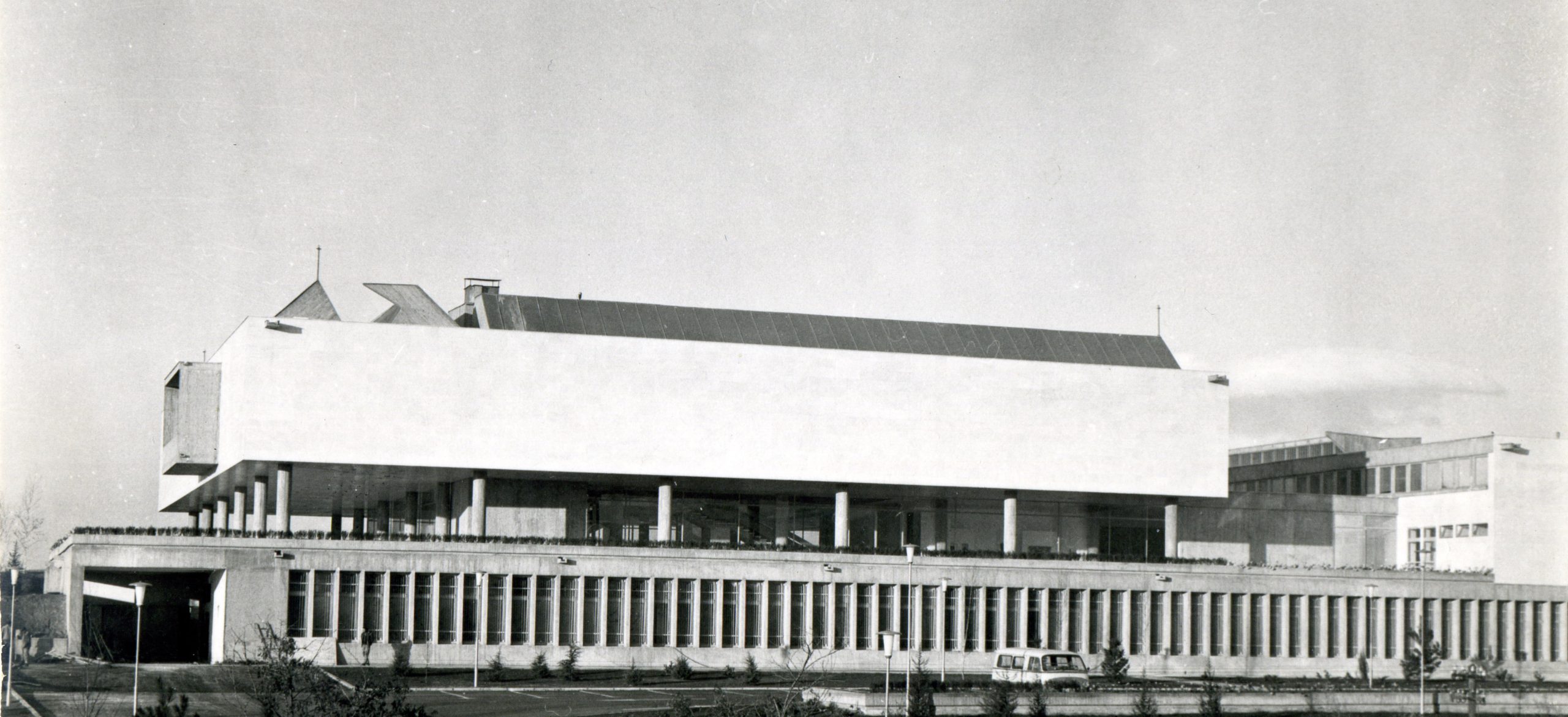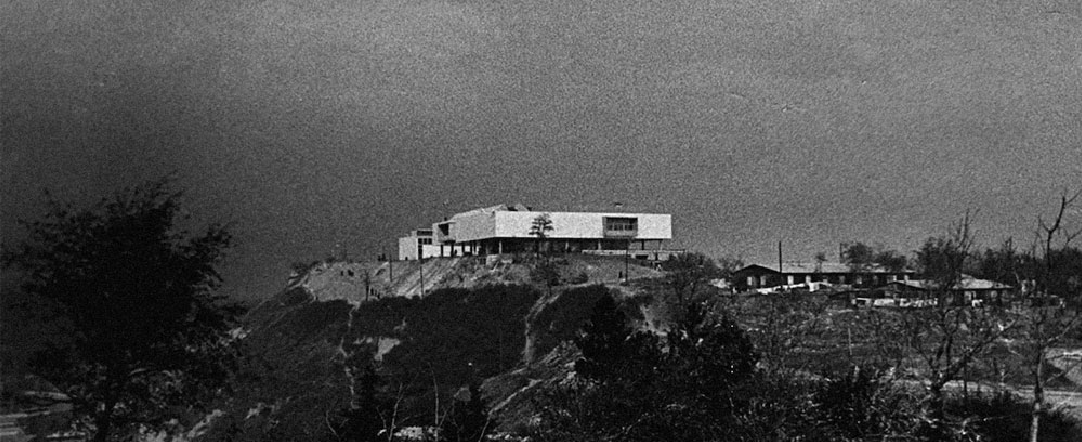
On 26 July 1963, early in the morning at 05:17, a disastrous earthquake destroyed the sleepy Skopje. The pictures and news of this catastrophe, in which more than 1000 people were killed, were in the world media headlines. The need for mobilization in overcoming the disastrous consequences was great and with global dimensions. “Skopje is not a film, not a thriller where we guess the chief event. It is a concentration of man’s struggle for freedom, with a result which inspires further struggles and no acceptance of defeat”. Jean-Paul Sartre, 1963.

Тhe international community manifested an exceptionally wide solidarity in assisting the reconstruction of Skopje. An important part of that solidarity was also the action initiated by the International Association of the Plastic Arts which on its convention held in October 1963 in New York, called upon the artists of the world to assist in creating a collection of works of art by which they would support the vision of the city reconstruction.
This action, as well as those by AICA, ICOM and other associations and individuals, contributed very quickly for the city of Skopje to acquire a remarkable collection of works of art. This information, together with the enthusiasm and vision of some people directly responsible for planning and reconstruction of the city, as well as the local artistic community, were sufficient motive for the initiation to establish the Museum of Contemporary Art. The Museum was established by an act of the Town Assembly of the city of Skopje on 11 February 1964.
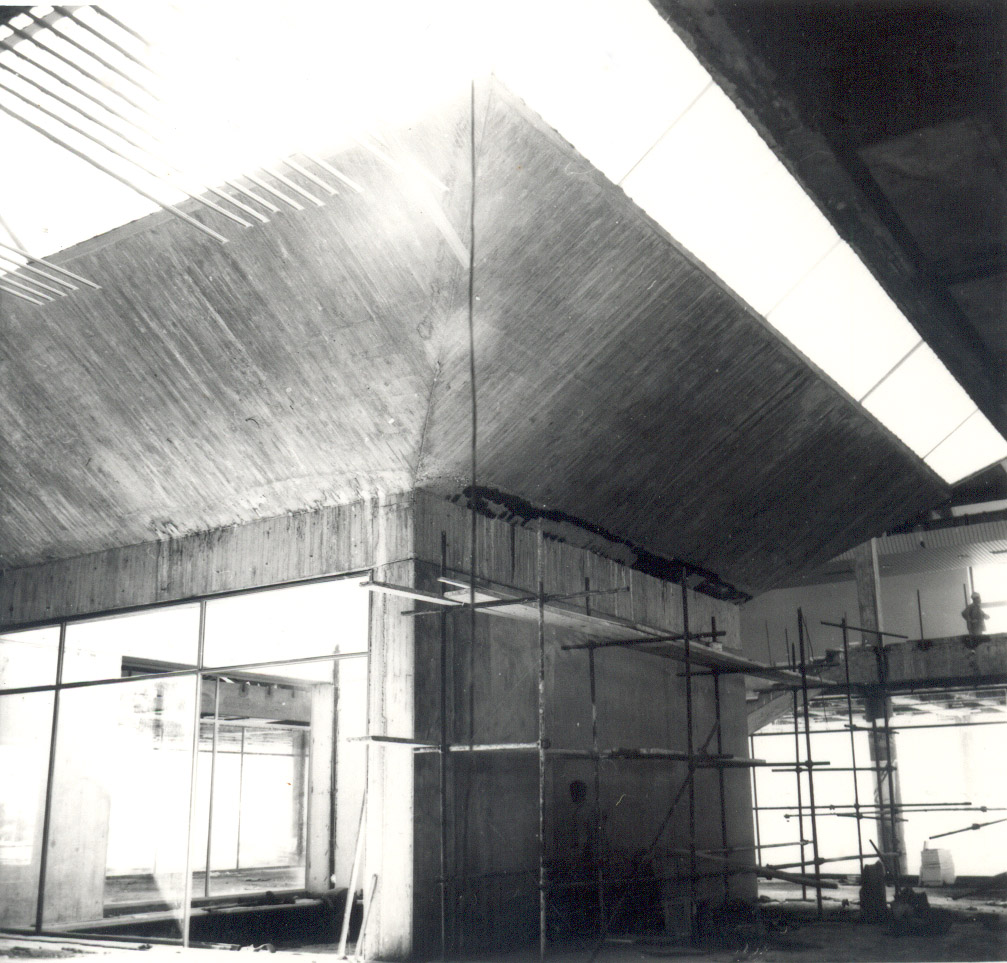
The Museum building, constructed in 1970, is an excellent example of the architecture of the late modernism and symbol of the renewal of Skopje after the 1963 earthquake. The building project was donated by the Polish Government, which made a national competition and where the joint work of the Polish architects: J. Mokrzynski, E. Wierzbicki and W. Klyzewski was accepted. Having a total area of 5500 sq. m., the Museum building is made up of three connected wings, which include over 3.000 sq.m. exhibitions rooms, cinema theater, library, storages and other facilities.
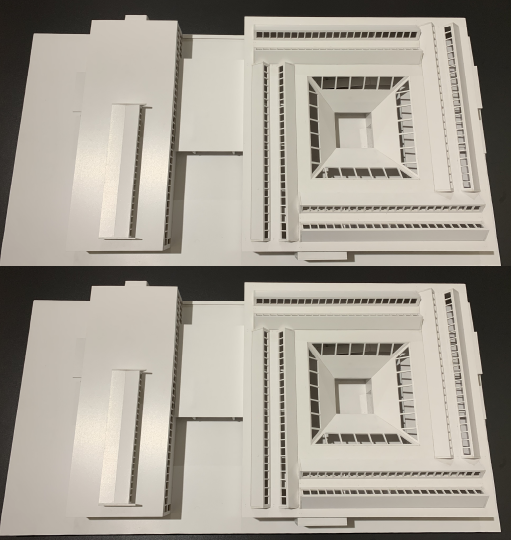
Although initially without a gallery space, the young and dedicated team of MSU organized several exhibitions in different galleries in Skopje. Particularly significant and successful is the period from 1966 to 1970, when the Museum manages to get a rented gallery space in Skopje downtown, where it organizes dynamic exhibition activity as the exhibitions of Hans Hartung and Anna-Eva Bergman, The Print of Pop-Art (Warhol, Lichtenstein, Wesselmann, Dine, Rosenequist, and others), the graphic work of Picasso, and solo exhibitions of Macedonian and Yugoslav artists, which significantly influenced the art practice in Macedonia. This trend will gain even greater quality with the opening of the new MSU building in 1970 and with the installation of the first Permanent Exhibition, in which the museum collection is presented integrally for the first time. The permanent exhibition underwent two more versions in 1981 and 1986, incorporating current donations and acquisitions. Starting from 1992 the works in the collection are presented through thematic shows. Besides its extensive exhibition program, MSU is the only institution in Macedonia that possesses archives on Macedonian art. From the beginning, the Museum is presenting contemporary art in all its visual and performative varieties. A significant part of the Museum activity consists also of regular interdisciplinary programs with guest lecturers from various theoretical disciplines dealing with actual issues of culture and society nowadays. The extension of specific educational programs is intended to bring closer the art to the public. In further promoting these intentions, we should also mention the publishing of The Large Glass Journal, the only periodical in Macedonia dedicated to the visual arts, and contemporary culture and theory.
